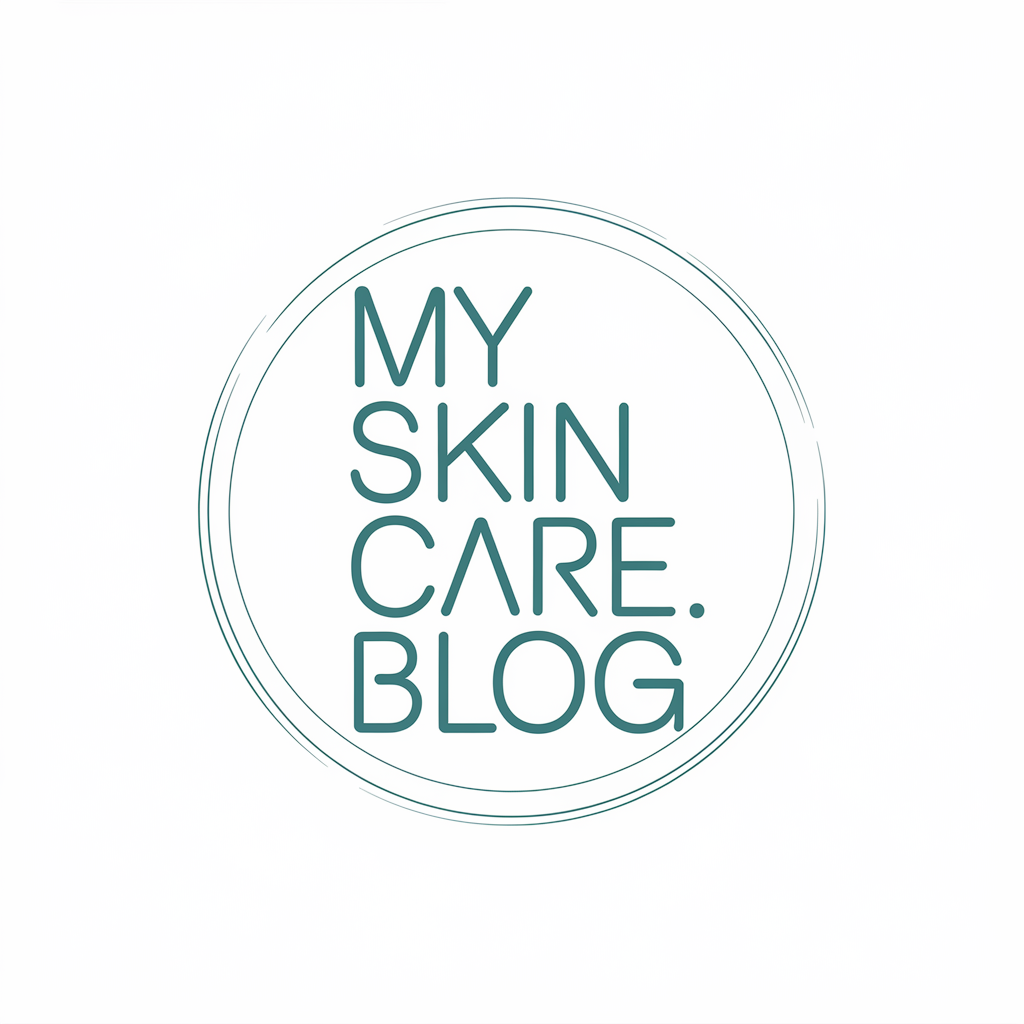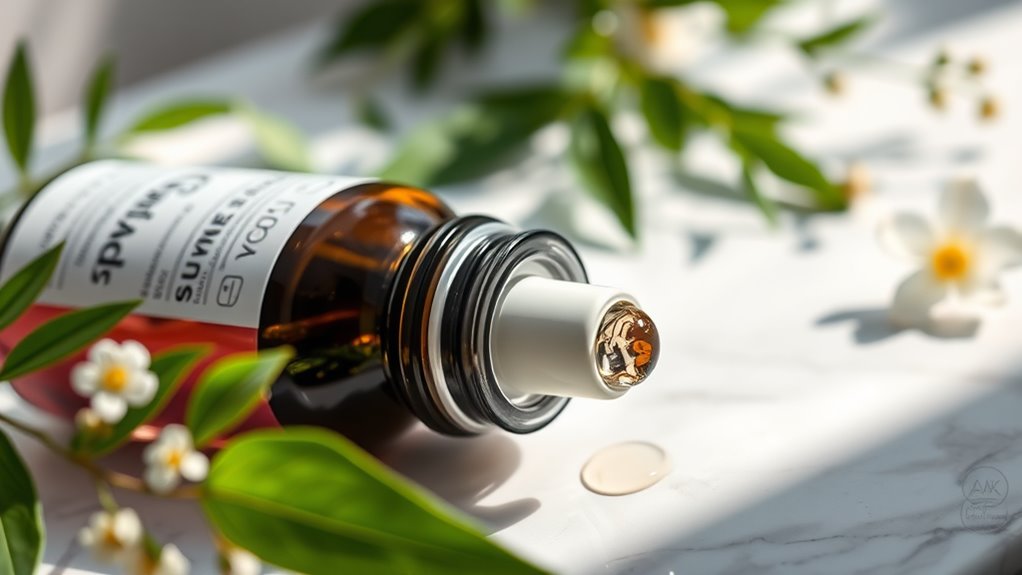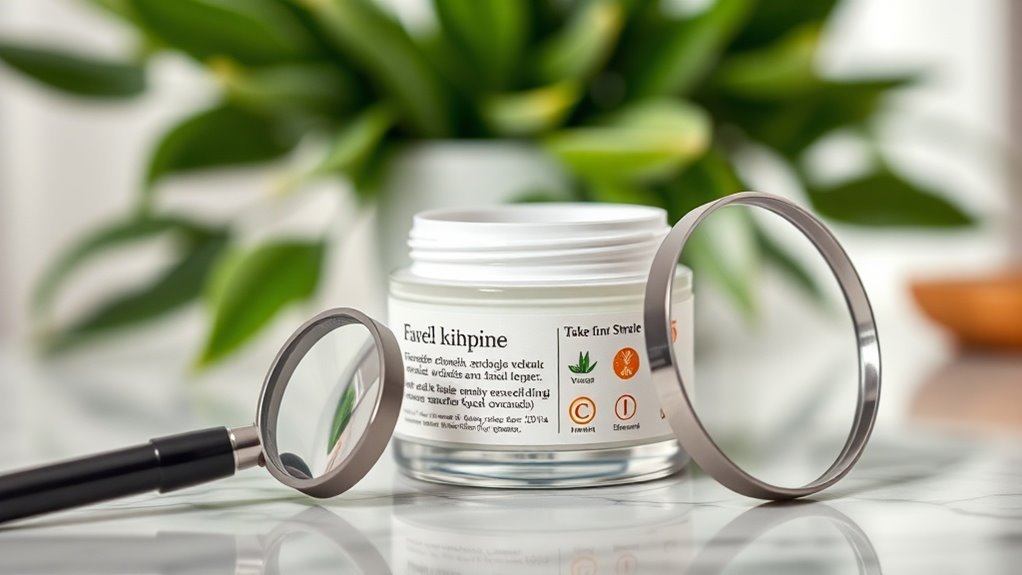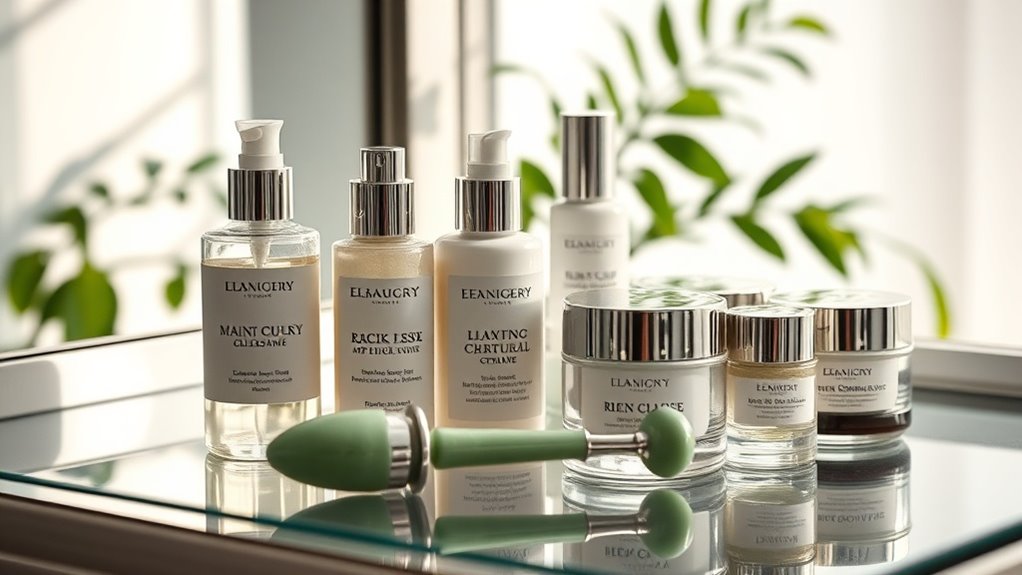Before You Buy- What Your Skincare Label Is Really Saying
When you pick up a skincare product, do you really know what’s inside? Understanding ingredient listings is essential, as they reveal what truly drives the formula’s effectiveness. While active ingredients like hyaluronic acid can work wonders, you must also watch for potential irritants. Plus, marketing terms can be misleading. Let’s unpack these labels to help you make informed choices that suit your skin’s unique needs. What might you discover lurking in those ingredients?
Key Takeaways
- Ingredients are listed by concentration; the first ones are most significant for skin benefits and potential irritants.
- Active ingredients provide targeted effects; know their functions, such as hydration from hyaluronic acid or cell turnover from retinol.
- Look for potential allergens like fragrances and preservatives, which can cause irritation or sensitivities in some individuals.
- Natural labels are often unregulated; synthetic ingredients can be effective and safer without side effects, so read carefully.
- Marketing terms like “hypoallergenic” or “natural” may lack definitions; seek reliable certifications for assurance of product safety.
Understanding Ingredient Listings
How often do you glance at ingredient listings on your skincare products?
Label reading is essential for understanding what you’re applying to your skin.
Ingredients are typically listed in descending order by concentration, meaning the first few are the most significant.
Pay attention to common irritants like parabens or sulfates, which can affect sensitive skin.
Natural ingredients, while often praised, aren’t always better; some can still cause allergic reactions.
By familiarizing yourself with these listings, you empower yourself to choose products that align with your skin’s needs, avoiding harmful additives and ensuring a healthier skincare routine.
Knowledge is your best ally! Understanding key ingredients is crucial for making informed choices.
Decoding Common Skincare Terms
When you pick up a skincare product, understanding the terminology can be a game changer.
You’ll encounter terms like active ingredients, natural versus synthetic labels, and various formulation claims that can influence your choices.
Let’s break down these common terms so you can make informed decisions about what you put on your skin. Additionally, being aware of marketing tactics used by brands can help you see beyond the packaging and truly understand what you’re applying to your skin.
Active Ingredients Explained
What do those active ingredients on your skincare label really mean?
Active ingredients are the stars of your products, delivering targeted benefits like hydration, anti-aging, or acne treatment.
For instance, hyaluronic acid attracts moisture, while retinol promotes cell turnover.
You’ll often see salicylic acid for acne and vitamin C for brightening.
Understanding these terms helps you choose products that align with your skin’s needs.
Keep an eye on concentrations, too; higher percentages can yield better results but may also cause irritation.
Natural vs. Synthetic Labels
Are you ever confused by the terms “natural” and “synthetic” on your skincare labels?
It’s easy to get lost in the marketing jargon.
“Natural” products claim to use ingredients sourced from nature, but this can be misleading since “natural” isn’t strictly regulated.
On the other hand, “synthetic” ingredients are chemically created, which often raises concerns.
However, synthetic compounds can be safe and effective, sometimes even outperforming their natural counterparts.
Understanding these labels helps you make informed choices.
Don’t automatically dismiss synthetic options; they might offer the results you’re seeking without the unwanted side effects associated with some natural ingredients.
Understanding Formulation Claims
How can you really know what’s in your skincare products?
Understanding formulation claims can help you decode the labels.
These terms are often marketing jargon, so it’s essential to know what they mean:
- Non-comedogenic: Won’t clog pores.
- Hypoallergenic: Less likely to cause allergic reactions.
- Dermatologist-tested: Evaluated by a skin expert, but not necessarily proven effective.
- Fragrance-free: Contains no added scents, but may still have natural fragrances.
Identifying Key Active Ingredients
Ever wondered what really goes into your skincare products? Identifying key active ingredients is essential for selecting the right products for your skin type. Look for well-known actives like hyaluronic acid for hydration, retinol for anti-aging, or salicylic acid for acne treatment. These ingredients often appear near the top of the ingredient list, indicating higher concentrations. Understanding their functions helps you target specific concerns effectively. Don’t just rely on marketing claims; dig deeper into the science behind these ingredients. Knowing what works for your skin can greatly enhance your skincare routine and lead to better results. Additionally, scientific explanations of how these ingredients function can provide further insight into their effectiveness in your regimen.
Recognizing Potential Allergens
Recognizing potential allergens in your skincare products is essential for maintaining healthy skin. You need to scrutinize labels carefully to avoid reactions. Here are some common allergens to watch out for:
- Fragrances: Often listed generically, they can trigger sensitivities.
- Preservatives: Ingredients like parabens may cause irritation for some.
- Natural Extracts: Plant-based components can provoke allergic responses.
- Colorants: Synthetic dyes might lead to skin reactions.
Always patch-test new products and consult with a dermatologist if you’re unsure. Additionally, be aware that some allergens can lead to long-term skin damage, influencing your overall skin health. Your skin deserves the best, and understanding allergens will help you make informed choices!
The Impact of Fragrance and Preservatives
Have you ever wondered why your favorite skincare products can sometimes cause irritation? Fragrance and preservatives often play a significant role.
While fragrances enhance the sensory experience, they can trigger allergic reactions or sensitivities, especially for those with sensitive skin.
As for preservatives, they’re essential for preventing microbial growth, but some can be harsh or irritating.
Look for terms like “paraben-free” and “fragrance-free” if you’re concerned. Toxic ingredients can sometimes be hidden under vague terms, making it crucial to educate yourself about what to avoid.
Understanding these ingredients helps you make informed decisions, ensuring that your skincare routine remains effective and gentle on your skin.
Always read labels carefully to choose products that suit your skin’s unique needs.
Navigating Marketing Claims and Certifications
Here are some key points to keep in mind:
- Natural: Lacks a clear definition; look for organic certifications for assurance.
- Hypoallergenic: Doesn’t guarantee allergy-free; test products before full use.
- Non-comedogenic: Claims to not clog pores; individual reactions may vary.
- Cruelty-free: Indicates no animal testing; check for specific certifications.
- Effectiveness of ingredients: Understanding the benefits of natural vs. chemical skincare can guide your product choices.





